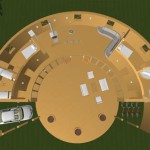Fall of the House of Usher Lesson Plans
Edgar Allan Poe's "The Fall of the House of Usher" is a classic of Gothic literature, offering a chilling exploration of isolation, madness, and the decay of both the physical and mental worlds. A lesson plan designed to guide students through this iconic story can foster critical thinking, analysis, and appreciation for literary techniques. The following outlines key points for engaging students with "The Fall of the House of Usher" in the classroom.
1. Setting the Scene: Unveiling the Gothic Atmosphere
The story's setting, the crumbling House of Usher, is integral to its mood and themes. A lesson plan should begin by exploring the gothic atmosphere that Poe creates. Students can begin by brainstorming the defining characteristics of the gothic genre, focusing on themes like:
-
Isolation and seclusion:
The Usher mansion's remoteness and decaying state create a sense of otherness and foreboding. -
Decay and ruin:
The house itself mirrors the physical and mental deterioration of the Usher family. -
Supernatural and the uncanny:
The story's exploration of madness, the mysterious illness, and the presence of Madeline Usher all contribute to a sense of the uncanny.
Students can then analyze the descriptive details Poe uses to evoke this atmosphere. Consider asking questions such as:
- How does Poe's language create a sense of dread?
- What specific imagery contributes to the gothic mood?
- What role does the weather play in the story's overall atmosphere?
By examining the setting, students will begin to understand how Poe's carefully constructed world contributes to the story's impact.
2. Delving into Characters: Exploring Madness and Decay
"The Fall of the House of Usher" features a cast of characters grappling with the dark side of humanity. A lesson plan should focus on the exploration of madness and its impact on the characters:
-
Roderick Usher:
His descent into madness is the story's central focus. Students can analyze Roderick's symptoms, his relationship with Madeline, and the effect his mental state has on the narrator. -
Madeline Usher:
Her ambiguous illness and mysterious death raise questions about her sanity and the nature of their family's curse. Students can explore the role of Madeline's character in the story's broader themes. -
The Narrator:
The narrator's role is crucial in understanding the events of the story. Students can analyze the narrator's perspective, his responses to the Ushers, and his eventual escape from the crumbling mansion.
A class discussion or individual writing assignments can encourage students to consider the following points:
- How does Poe reveal the characters' mental states?
- What are the possible causes of Roderick's madness?
- How does the relationship between Roderick and Madeline contribute to the story's overall themes?
- What is the significance of the narrator's perspective on the events of the story?
Through examining the characters, students will gain a deeper understanding of the story's exploration of the human psyche and its darker aspects.
3. Unraveling Symbolism: The Meaning Behind the House
The House of Usher is not just a setting; it is a powerful symbol that reflects the story's themes and foreshadows its conclusion. A lesson plan should highlight the symbolic significance of the house:
-
The crumbling mansion:
The house's physical decay mirrors the deterioration of the Usher family and their lineage. -
The House and the Family:
The house represents the Usher family itself – their shared heritage, their isolation, and their eventual decline. -
The house's collapse:
The final destruction of the house foreshadows the inevitable downfall of the Usher family and the collapse of their world.
Students can explore the symbolic importance of the house through various activities:
-
Symbolism analysis:
Students can analyze specific descriptions of the house and identify key symbols, explaining their significance. -
Thematic connections:
Students can connect the house's symbolic meaning to the themes of the story, such as decay, isolation, and the fragility of human existence. -
Visual representations:
Students can create visual representations of the house to demonstrate their understanding of its symbolic role in the story.
By examining the symbolism of the house, students can deepen their understanding of the story's core message and appreciate the richness of Poe's writing.
These points offer a framework for engaging students with "The Fall of the House of Usher." By exploring the gothic atmosphere, analyzing the characters, and uncovering the symbolism within the story, students can develop a deeper understanding of Poe's literary genius and the enduring power of his masterpiece.

The Fall Of House Usher Lesson Plan Gothic Lit Ysis

The Fall Of House Usher Lesson Plan Edgar Allan Poe Plot Diagram

The Fall Of House Usher Traits Gothic Literature

The Fall Of House Usher By Edgar Allan Poe Part One

Edgar Allan Poe Reading Worksheet The House Of Usher

The Fall Of House Usher Traits Gothic Literature

The Fall Of House Usher

The Fall Of House Usher Traits Gothic Literature Activities Teaching Edgar Allan Poe

Roderick Usher Overview Ysis Lesson Transcript Study Com

S The Fall Of House Usher Is A Whole Mood Atlantic








